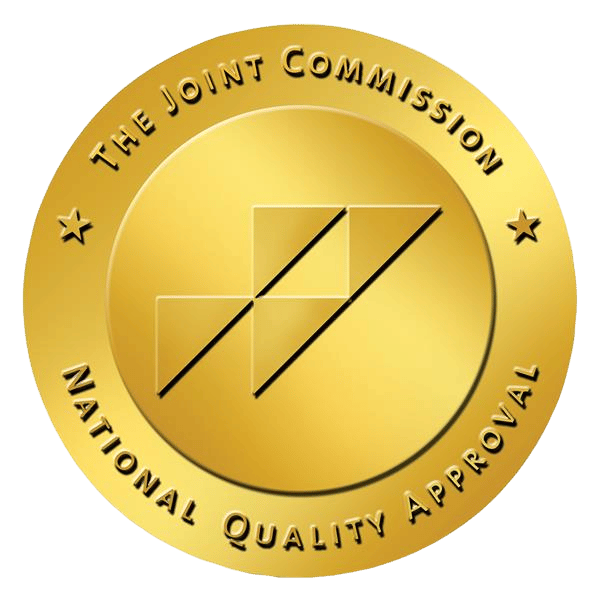Substance abuse and addiction are growing problems throughout the United States. More than 48 million people reported having a substance use disorder in 2022, or nearly 2 in 5 people.1 Rates of abuse continue rising year after year across all substances, from alcohol to marijuana to methamphetamine to fentanyl. The rising rates of addiction throughout the country are a dire problem.
Unfortunately, San Bernardino is no exception. As the fifth-largest county in California, San Bernardino County is home to more than 2.1 million people as of the 2020 census. Alcohol and drug addiction affect the population of San Bernardino similarly to the rest of the nation. Thankfully, addiction treatment programs such as New Origins provide a comprehensive, accessible approach to addiction recovery for men in the San Bernardino area.
The urgent need for men’s intensive outpatient programs for addiction in San Bernardino County extends far beyond substances themselves. Untreated substance abuse causes problems not only for the individuals and their loved ones but for the community as a whole. Alcohol and drug abuse are highly correlated with other criminal activity, including violence, theft, and more.2 The effects of treating substance abuse and addiction ripple out into other areas and improve all aspects of a community.
How can outpatient addiction treatment programs like New Origins make an impact on the overall addiction crisis in San Bernardino, what role do they play in providing a pathway to recovery, and how do gender-specific treatment programs meet a unique need in the area?
San Bernardino County’s Unique Need
San Bernardino County is home to a relatively diverse population of individuals.3 The demographics in the county break down as follows:
- 53.67% Hispanic or Latino
- 25.95% White
- 8.08% Asian
- 7.94% Black or African American
- 3.14% Multiracial
- 0.39% Native American or Alaska Native
- 0.28% Pacific Islander
- 0.56% Other
Alcohol and drug use continue to be a problem in San Bernardino alongside the United States as a whole. According to San Bernardino County Community Indicators, following a 10-year low in 2012, substance use disorder-related deaths continue rising each year.4 In 2020, 18.2 per 100,000 people died of a drug-induced cause and 17.8 per 100,000 died of alcohol-related chronic liver disease or cirrhosis. San Bernardino County also has higher rates of alcohol-involved collisions compared to the state as a whole. 11% of auto collisions involved alcohol in 2019 compared to 10% statewide.
Opioids are particularly detrimental to San Bernardino and the surrounding area. A 2019 study of the state of California revealed 133 opioid-related deaths in San Bernardino County and 245 in nearby Riverside County.5 Another county-funded study revealed that fentanyl-related deaths increased fifty-fold since 2016. Fentanyl claimed the lives of 316 people in San Bernardino in 2021, compared to 6 in 2016.4 This sharp increase is cause for serious alarm and further proves the need for men’s IOP for addiction in San Bernardino.
Age-specific data for addiction in San Bernardino is not as widely available, but statewide data offers insights that suggest how patterns may look in the county. The same 2019 California study referenced above revealed the following age group breakdowns for substance use disorder to any substance:
- 4.6% of 12-17 years olds
- 16.1% of 18-25 year olds
- 8.1% of 25 years and older
The trends are similar among those with alcohol use disorder (1.8%, 10.5%, and 6.1%) as well as illicit drug use disorder (3.7%, 8.5%, and 2.9%).5 The young adult population is most affected by addiction and in the greatest need of help from addiction treatment programs in San Bernardino County and the state at large.
Substance Use Disorder Among Men
Most studies and research gather data on substance use disorder without distinguishing use between men and women. Those who separate statistics by gender note that substance abuse is typically more prevalent among men than women. Men are also more likely to use alcohol and drugs in ways that result in emergency department visits or deaths due to accidental (or sometimes intentional) overdose.6
Men not only face higher rates of substance misuse and abuse, but they also face unique challenges when they realize they need help. Oftentimes men are less likely to seek the help they need because society discourages emotional vulnerability and seeking assistance. They are told to suck it up, hold it together, and figure it out on their own.
Men also face another roadblock when they are ready to seek help: many of them are the primary providers for their families. Taking time off work to go to treatment means taking away money their family needs to pay the bills, purchase groceries, and put fuel in the car. They may find themselves sinking further into the grip of addiction but feel it’s impossible to get the help they need.
The Benefits of Intensive Outpatient Programs
Intensive outpatient programs (IOPs) are an important component of the addiction treatment spectrum. Sometimes people who seek addiction treatment opt for a full continuum of care. They start with a drug detox, transfer into an inpatient rehab program, and then transition into outpatient care. These programs typically require a minimum of 30 days, but some are upwards of 60 days, 90 days, or even longer.
Unfortunately, not everyone has this much time to commit to an addiction treatment program. They may have work, school, family, children, and other responsibilities to handle and cannot check themselves into a program that lasts multiple months. This is especially true of men whose jobs support their families by keeping bills paid and putting food on the table. They often learn to become “functional” substance users who continue showing up to work or other commitments while under the influence.
IOPs enable these individuals to receive the care they need without having to leave their families and other responsibilities behind. IOP programs typically take place three to five days per week for two or three hours per day, leaving the rest of the day to handle other obligations. They make addiction treatment services more accessible to those who otherwise might not have access to the treatment services they desperately need.
IOPs also offer care at a more affordable price point than other addiction treatment programs. Rather than the tens of thousands charged by inpatient rehab facilities and other similar approaches, IOP also has accessible pricing options. Additionally, many insurance companies can work with intensive outpatient programs because of their more affordable price points which enables more people to find and receive care.
Why Men’s IOP Matters
Men and women each face unique challenges that come with addressing addiction and achieving recovery. Some IOPs, such as New Origins, provide gender-specific services that tailor their programs to recognize these disparities. Offering gender-specific services addresses the different social, cultural, and psychological factors that contribute to substance abuse.
Men’s addiction treatment programs address the stigma men face and the shame they often feel when they are finally ready to ask for help. They provide a male-only environment where men can be more vulnerable than they might be willing to be in a co-ed environment. Men’s treatment programs can also utilize approaches that men benefit from, including problem-solving, accountability, and action-oriented strategies.
Gender-specific programs also reduce the distractions that come with co-ed environments. Early recovery is often filled with emotions and people are quick to substitute one addiction with another. Eliminating the distraction of the opposite sex enables men to focus solely on overcoming addiction and building a solid foundation for recovery.
Men’s IOPs place men in groups with their peers who are more likely to understand and share similar experiences and challenges. They are also better equipped to provide culturally competent care that considers the individual cultural backgrounds and identities of each person, something especially important in an area as diverse as San Bernardino.
Finding Freedom from Addiction at New Origins
New Origins is a men’s addiction treatment program in Redlands, CA that provides outpatient services to men seeking recovery from substance use disorders. We help you establish and begin your journey on a path to recovery that recognizes your unique needs as a man in Redlands or the greater San Bernardino area.
Treatment at New Origins begins with a comprehensive assessment that identifies your experiences, challenges, and goals. We develop your individualized treatment plan, including therapeutic services and family involvement as needed. Our outpatient nature also ensures flexible scheduling that allows you to maintain daily responsibilities while still receiving the support, direction, and accountability you need.
If you are ready to start your journey to recovery, call us or submit an online request form to speak with an admissions specialist. We will outline your options, help you determine whether New Origins is right for you, and get you set up with a program that best fits your needs, no matter whether this is your first time getting sober or your fifth attempt. Don’t wait any longer – you deserve to start today.
References
1. Substance Abuse and Mental Health Services Administration. (2023). Results From the 2022 National Survey on Drug Use and Health.
2. National Institute on Drug Abuse. (2020). Criminal Justice DrugFacts.
3. United States Census Bureau. (2020). San Bernardino County, California.
4. San Bernardino County. (2022). Community Indicators – Substance Abuse.
5. California Health Care Foundation. (2022). Substance Use in California: Prevalence and Treatment.
6. National Institute on Drug Abuse. (2020). Sex and Gender Differences in Substance Use.


